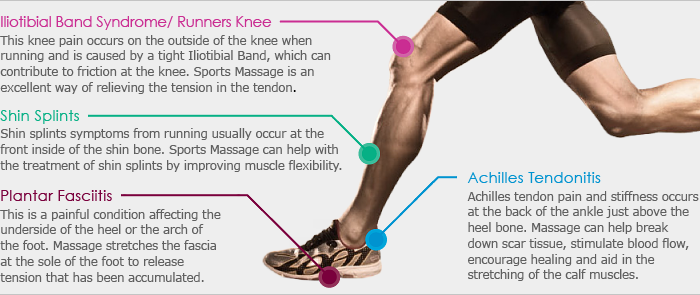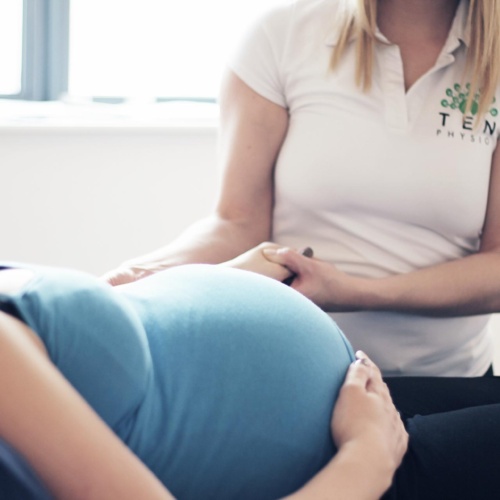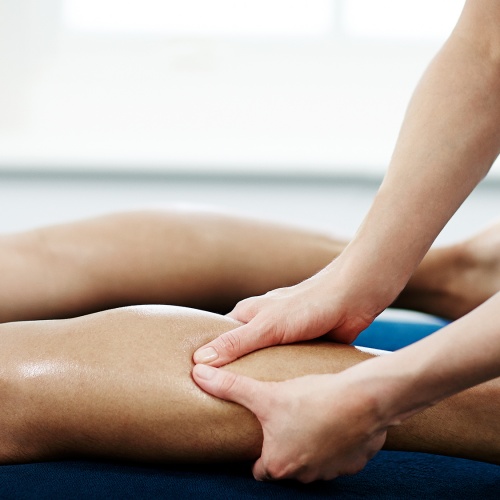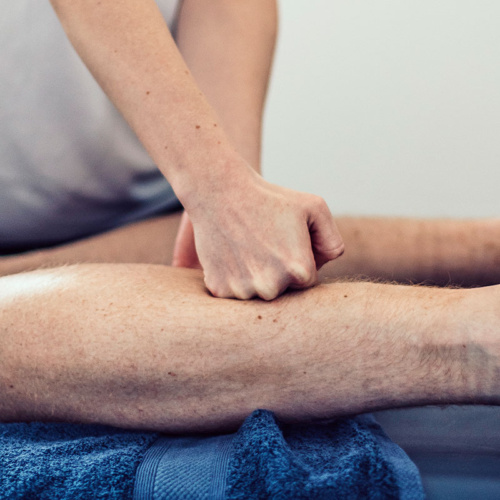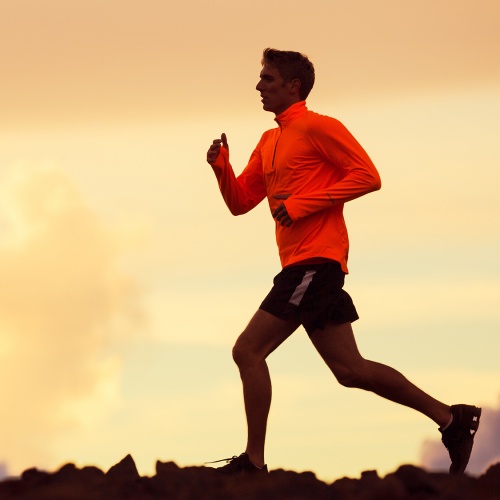For any regular runner – particularly anyone training for marathons or other distance events – one of the biggest challenges is to avoid injury, or failing that to limit its effects and impact.
Making Sports Massage Therapy a part of your training programme offers a range of benefits including reduced muscle stiffness and soreness, faster recovery from exercise and the ability to train more frequently, as well as improved posture and injury prevention.
Here’s how:
Reduced muscle stiffness and soreness
If you think of the last time you hurt yourself, you probably rubbed the area. Touch is not only an instinctive reaction to pain, but also a natural, scientifically proven way to enhance the body’s natural ability to heal itself. Massage increases blood circulation, helping provide the oxygen and nutrients that the tissues need for recovery. The manual pressure of massage stimulates the arteriolar pressure, as well as increasing muscle temperature. This enhances the exchange of substances between the blood and tissue cells, which promotes metabolism and assists the body during its remodelling phase after exercise. In addition, massage assists in breaking down the scar tissue and adhesions that cause stiffness and pain during recovery time.
Shorter recovery time after exercise
Muscle soreness is caused by waste products such as lactic acid and carbonic acid that accumulate in the muscle tissues after exercise. By increasing the circulation of the lymph flow, massage can help eliminate these. Moreover, exercise can overwork or traumatise the joints and tissues surrounding them, and as a result they tend to tighten and become stiff. Massage improves range of motion, muscle flexibility and decreases muscle tension.
Improved posture
Massage stretches and loosens shortened muscles, restoring range of motion. In addition, it can also stimulate weak, flaccid muscles. In combination, this ability to ‘rebalance’ the muscles can significantly improve posture, encourage more efficient movement and prevent or reduce current or future postural injuries.
Faster rehabilitation after injury. Prehabilitation to avoid it
Massage helps prevent and supports the healing of injuries. Many soft-tissue injuries will benefit from a massage treatment by reducing the formation of scar tissue and by influencing the secretion of fluids necessary for tissue repair. The increased circulation of blood and lymph flow promotes tissue regeneration and reduces inflammation. Massage can also focus on specific muscles or areas (often the result of previous injuries) to keep them in a healthy condition and to prevent any developing problems.
Pain relief
Massage is believed to reduce pain by blocking pain signals sent to the brain and to encourage relaxation by stimulating the nervous system. It can also reduce painful muscle spasm and cramping and enhance blood flow to nerves that may have been damaged from injury.
The majority of running injuries develop over a period of time; they’re overuse injuries, due to repeated impact. Clearly, given the nature of the training involved, this is a potential concern for anyone preparing for or competing in distance events.
To avoid having to pull out of the race after months of hard training, it is recommended to seek early treatment. If you already feel a niggle which is causing you concern, the best advice is to get it checked as soon as possible to avoid further damage
